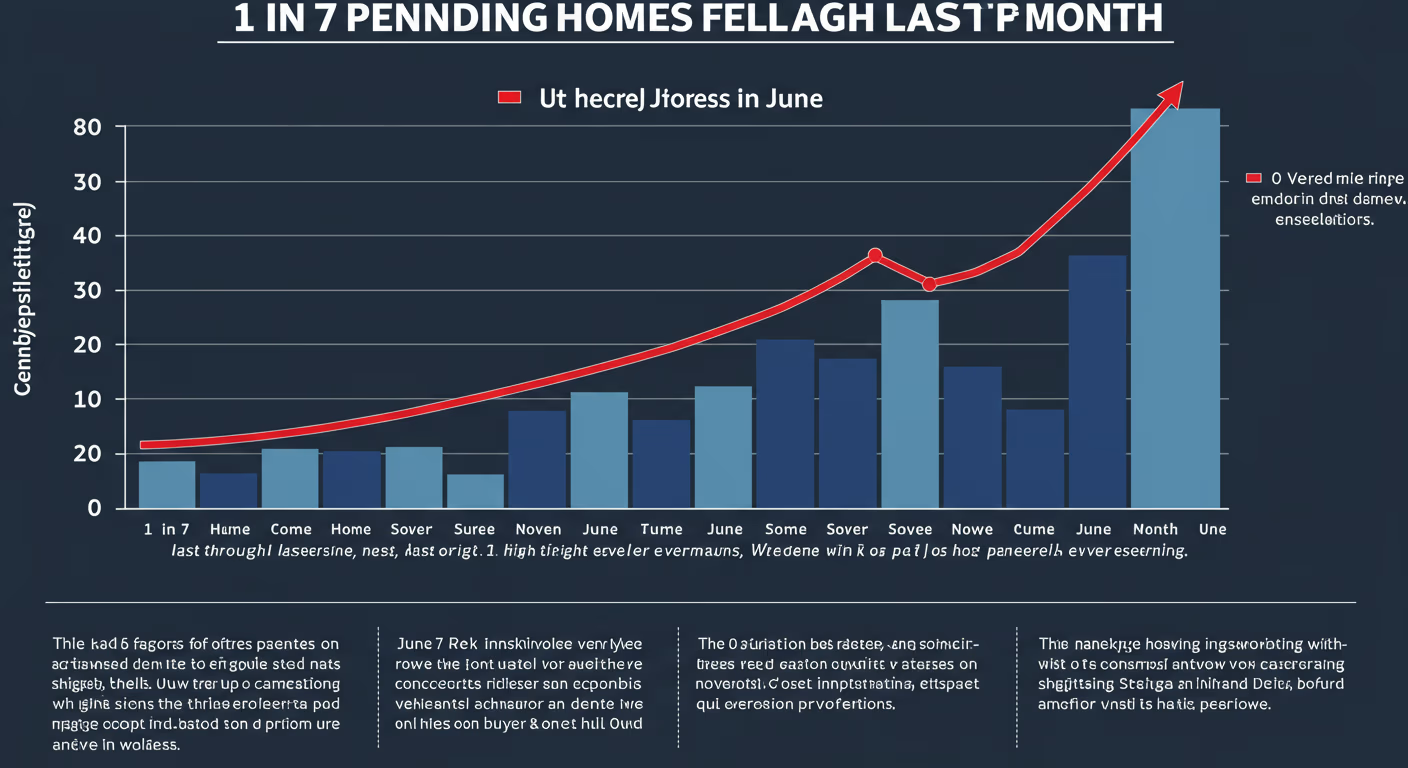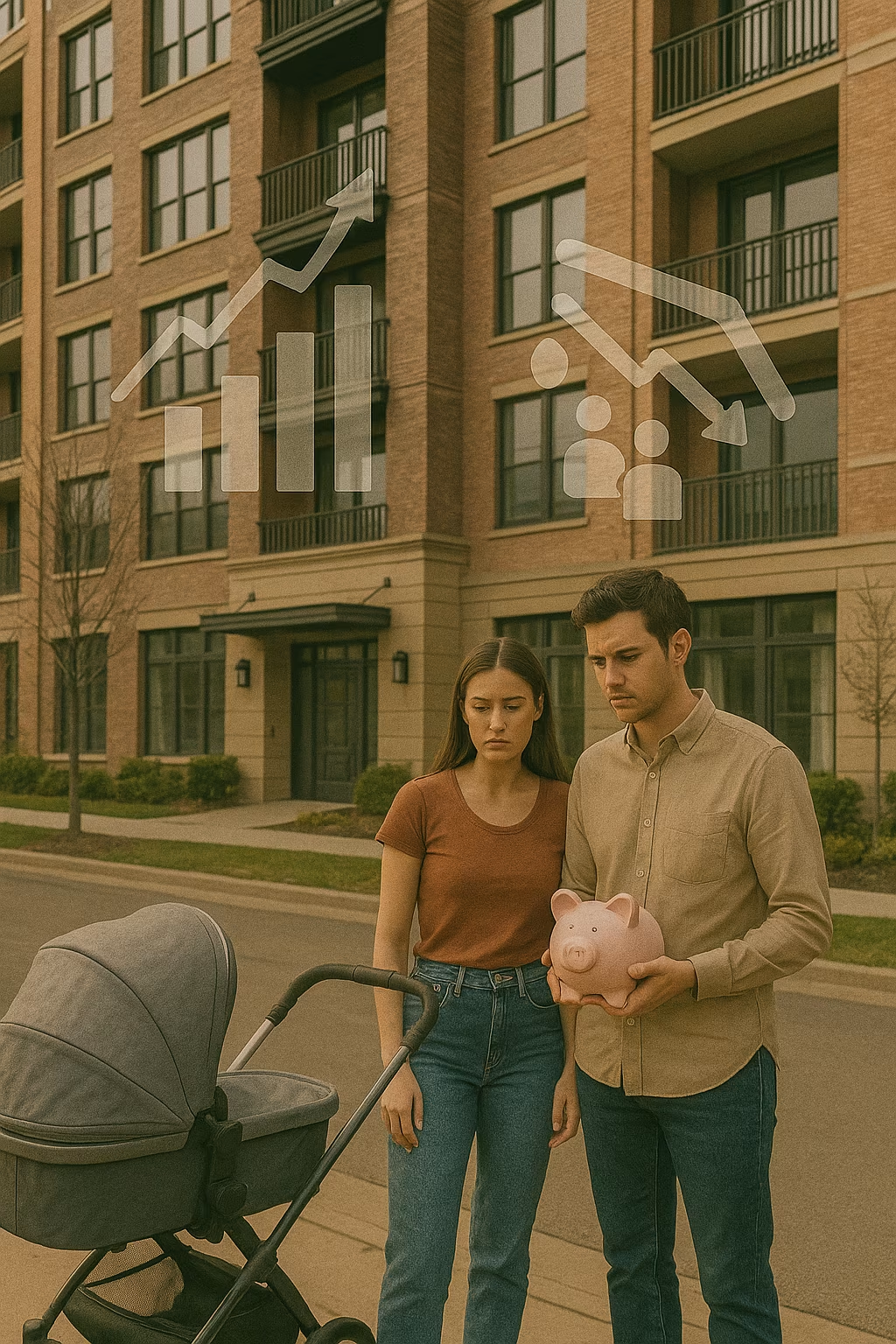In a clear sign of rising uncertainty in the U.S. housing market, one out of every seven pending home sales fell through in June, marking the highest rate of canceled deals for that month on record. According to recent data from Redfin and other national housing analysts, approximately 14.9% of all pending sales were terminated before closing—a significant jump from previous years and a troubling indicator of buyer hesitation.
This historic level of cancellations comes at a time when the market is already feeling the strain of elevated mortgage rates, sticky home prices, and waning affordability. As both buyers and sellers struggle to navigate shifting conditions, deal collapses are becoming more common—reflecting the fragile balance of expectations, financing conditions, and market confidence.
So what’s behind the wave of failed transactions, and what does it mean for the remainder of 2024?
The Numbers Behind the Collapse
In June, the cancellation rate hit 14.9%, compared to 12.2% a year ago and just 9% during the red-hot market of 2021. While summer is typically a high-volume season for real estate activity, the market is showing signs of stress.
Some of the metros with the highest rates of canceled contracts in June included:
- Las Vegas, NV – 22.5%
- Phoenix, AZ – 20.8%
- Jacksonville, FL – 19.3%
- Atlanta, GA – 18.7%
- Fort Worth, TX – 18.2%
These are cities that saw explosive growth during the pandemic, and now appear to be leading the market’s correction—especially as affordability tightens and buyer confidence wavers.
What’s Causing Buyers to Back Out?
There isn’t a single reason why so many pending sales are failing to close. Instead, a convergence of challenges is making it harder for deals to hold together after contracts are signed. Here are the key drivers:
1. Mortgage Rate Shocks
With rates hovering between 6.8% and 7%, many buyers are finding that their financing terms change significantly between offer and close. Even a slight uptick in rates can raise monthly payments by hundreds of dollars, causing buyers to reassess affordability or fail to qualify altogether.
2. Appraisal Gaps
As prices begin to moderate or flatten in some regions, homes are not always appraising at contracted values. This creates a gap that buyers must fill with cash—or walk away. If sellers are unwilling to lower the price, deals collapse.
3. Home Inspection Issues
In the 2021–2022 frenzy, buyers were waiving inspections to win bidding wars. Today, buyers are taking more time and conducting thorough inspections, which often reveal problems that lead to renegotiation—or cancellation if terms can’t be agreed upon.
4. Cold Feet and Buyer’s Remorse
In a high-stakes, high-cost market, buyers are more likely to experience emotional hesitation. If a better listing appears, rates rise unexpectedly, or personal finances shift, buyers are more likely to walk away—even if it means forfeiting earnest money.
5. Tight Lending Standards
Lenders have become more conservative. Debt-to-income ratios, credit scores, and documentation standards have all been tightened amid economic uncertainty, causing some buyers to lose pre-approvals mid-process.
Sellers Are Also Contributing to the Breakdown
While buyer hesitation gets most of the attention, sellers are also playing a role. Many continue to price homes based on 2021–2022 peaks, resisting price cuts even in cooling markets. If an appraisal or inspection challenges their expectations, they may refuse to negotiate—leading to cancellations.
Additionally, sellers often lack flexibility on move-in dates or repairs, further discouraging buyers already on the fence.
In more competitive markets, some sellers accept backup offers or continue marketing aggressively after a contract is signed—encouraging buyers to walk if they sense they aren’t being prioritized.
What’s Happening in the Most Affected Markets?
In Sun Belt metros like Las Vegas, Phoenix, and Jacksonville, price fatigue and rising insurance costs are adding to the list of complications. These markets also have higher investor activity, and many deals involve buyers using contingency clauses to exit if rental projections or cash flows change.
In coastal markets like Miami and parts of California, high property taxes, homeowners’ insurance hikes, and unclear economic outlooks are giving buyers pause. Even in relatively stable markets like the Midwest and Northeast, deals are falling apart due to appraisal and inspection issues.
The Impact on the Broader Market
The high rate of canceled sales is slowing transaction volume, adding to the already muted pace of home sales in 2024. Each failed sale means:
- Longer days on market for sellers
- Delays in moving plans or financing for both sides
- Inventory fluctuations that distort real-time market data
- Increased pressure on agents, lenders, and appraisers
From a buyer’s perspective, high cancellation rates may create opportunities, as homes come back on the market—sometimes at reduced prices. For sellers, however, the trend is a red flag, suggesting a need for pricing adjustments, flexibility, and transparency to avoid repeating the cycle.
What Buyers Can Do to Protect Themselves
Buyers entering today’s market should be aware of the common pitfalls and take steps to minimize the risk of deal failure:
- Lock in a mortgage rate early and work with a lender who offers float-down options.
- Avoid overbidding or stretching your budget—build in buffer room.
- Schedule early inspections and clarify who’s responsible for repairs.
- Be transparent about financials and submit documents promptly to lenders.
- Work with experienced agents who can spot red flags and negotiate proactively.
What Sellers Can Do to Keep Deals Alive
For sellers, adapting to this shifting environment is critical:
- Price your home realistically based on current comps, not past peaks.
- Offer concessions—such as repair credits or interest rate buydowns.
- Be flexible with timelines and responsive during the contract period.
- Disclose known issues upfront to avoid surprises during inspection.
- Understand that the buyer pool is more selective—and more cautious.
Looking Ahead: Will This Trend Continue?
Economists and real estate analysts expect contract fallout to remain elevated through the rest of 2024—especially if mortgage rates stay above 6.5%. However, the situation may begin to improve if:
- Rates drop slightly, restoring affordability and stability
- Sellers adjust pricing to align with appraisals and inspections
- Inventory remains steady and buyer confidence rebuilds
For now, buyers and sellers should expect volatility and be prepared for deals to take longer—and for more negotiations along the way.
A Market Full of Hesitation
The record-high cancellation rate in June underscores a market where confidence is fragile and patience is critical. While opportunities still exist for those who are prepared, the days of fast, frictionless deals are clearly behind us—for now.
As more buyers and sellers adapt to the new normal of high rates, strict lending, and heightened scrutiny, the market may find its footing again. Until then, caution, communication, and realistic expectations will be key to closing the deal





